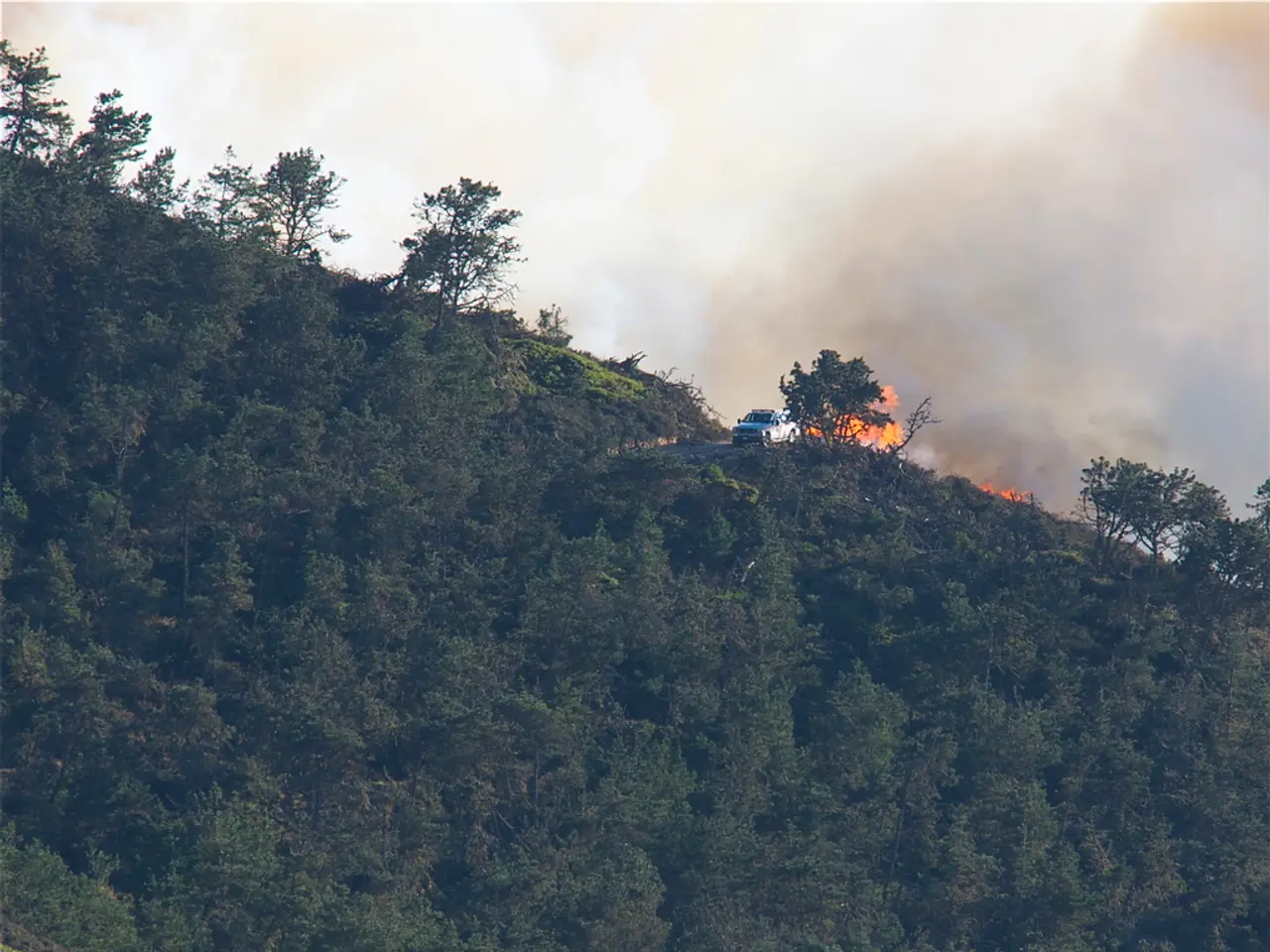Los Angeles Fire Under Control
In the face of rising temperatures and the heightened risk of forest fires, the U.S. weather service has predicted temperatures of around 36 degrees Celsius on Sunday. This news comes as a reminder of the importance of proactive fire prevention measures, particularly in high-risk areas during periods of high temperatures, drought, low humidity, and wind.
One such area is California, where authorities have been implementing a comprehensive strategy to combat wildfires. Key measures include predeploying firefighting resources, promoting community wildfire action plans, encouraging local emergency alerts, conducting forest health and fire resilience projects, taking a landscape-scale approach, and monitoring key environmental factors.
For instance, during critical fire weather conditions in July 2025, California prepositioned 14 fire engines, four water tenders, and dispatchers in Nevada, Sierra, and Plumas counties. These measures aim to ensure rapid response and containment of new fires.
Community wildfire action plans focus on preparing homes and neighborhoods through fire-resistant landscaping, creating defensible space, hardening structures, and establishing evacuation plans. Examples include the Southern Marin Fire District’s Wildfire Action Plan, which covers preparation, evacuation, and recovery.
Residents are also encouraged to sign up for local emergency alerts and stay vigilant during fire weather periods. Forest health and fire resilience projects, such as ecological forest thinning, fuels reduction, and targeted vegetation management, are also crucial in reducing wildfire severity and improving forest resilience.
The "Canyon Fire," which started on Thursday approximately 60 kilometers northwest of Los Angeles, has stirred memories of the devastating fires in January that left a path of destruction in parts of Los Angeles. The fire has burned nearly 22 square kilometers, with two homes and five uninhabited buildings destroyed. Damage assessment teams have inspected most of the affected area, and residents are now allowed to return to their homes.
Crews will continue to work overnight to secure residential areas and extinguish any remaining hotspots. The "Canyon Fire" is currently 47% contained, according to Cal Fire's latest announcement on Saturday. However, authorities have issued a warning to avoid anything that could cause sparks due to the high risk of forest fires.
Despite the progress made in firefighting efforts, the exact cause of the "Canyon Fire" remains unknown. The loss of life in previous fires, such as the ones in January that claimed at least 31 lives, serves as a grim reminder of the devastating impact of wildfires.
Authorities remain optimistic about the progress made in firefighting efforts, acknowledging the importance of the multifaceted strategy combining rapid emergency response readiness, community education and preparation, ecological management, and interagency coordination to reduce wildfire risk and improve safety during extreme fire weather conditions.
- The ongoing climate-change and its effects, such as rising temperatures, have highlighted the importance of environmental-science, particularly in industries like weather-forecasting.
- The dangerous fire weather conditions, often seen in sports like cycling or running, where competitors can be exposed to high temperatures and low humidity, have become a significant concern.
- Embracing sports-analysis that focuses on weather conditions could help athletes prepare and avoid accidents during risky periods.
- As forest fires continue to pose threats, especially in high-risk areas like California, the science behind understanding and combating climate-change becomes increasingly crucial.







